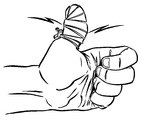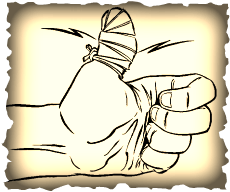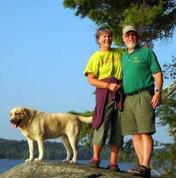
 Mariko Nobori provides 10 tips for teaching critical thinking here. They should look familiar to SPEC Teachers. I like the first one, Question, Question, Question. The key of course is asking the right questions. My thinking is, if the question can be answered by Googling it then it isn't a good question.
1 Comment
Here is a very good and concise explanation of Project-Based Learning Starting this week I will be sharing one “camping tip” a week. These tips were developed for The Camper’s Guide to Outdoor Pursuits which I authored with friend and colleague Eric Holmlund. Our intent was to provide a fun and easy way to find some of the most important information so we created a series of seven different types of tips. Each tip is indicated by a graphic or icon. Some of the different kinds of tips are essential, and others are meant to be read by those with special interests. For those of waiting for me to finish my “50 Lessons Learned” don’t despair. I haven’t given up on that project. I just haven’t had the time to create what is essentially original work. I hope to restart that project this winter. What you get here is some entertaining and education recycled information. I hope you like them and please let me know what you think of them. I love to hear your opinions.  Bottom-Line Tip The Bottom-Line Tip is probably my most important tip. It repeats, condenses, and highlights the essential information from our book The Camper’s Guide to Outdoor Pursuits. Have you ever had a conversation with someone who rambled on and on and you just wanted to say, “Stop talking for a second! Could you just tell me the bottom line?” I know how you feel.  Environmental Tip The Environmental Tip also condenses and highlights essential information underscoring certain environmental ethical points that help protect natural ecosystems.  Philosophy Tip The Philosophy Tip is for the thinker in you. Many people go to the wild for deeply personal, intellectual or spiritual reasons. The Philosophy Tip investigates the “why” in everything we do. Don’t worry – these tips are THAT deep.  Quality Camper Tip The Quality Camper Tip is for the camper who wants to “go the extra mile” in practicing camping and travel techniques. Generally, the Quality Camper Tip gives techniques that appeal to the perfectionist in us. Or simply that part of us that wants to look extra sharp in the backcountry. I urge you to go for it! I try to implement these practices all the time.  Safety Tip The Safety Tip underscores and condenses essential safety information that will help you avoid injury and accidents while traveling and camping.  Techweenie Tip The Techweenie Tip is for the “gear head” in all of us. When they have the time and inclination, most campers have an interest in the science behind many of the high-technology products that are available for backcountry users today. How many times have you wondered, “Now, just how does that work?” I’ve chosen to answer some of those questions in the Techweenie Tip. And by the way, “Techweenie” is a term of endearment?  Tricks of the Trade Tricks of the Trade are the little secrets that experienced campers all seem to know. On the other hand, you’ll always find that somebody has a simple or more creative way to do simple camping tasks. We learn new Tricks of the Trade all the time from both new and veteran campers. I’ve chosen a few that I thought you could use.  Are you Ready for the First Tip? Safety Tip - Dressing for Safety Every user of wild lands has the responsibility to dress properly, both for their own safety and that of family members, friends, and clients who are traveling with them. Campers should also bear in mind the efforts of the rescuers who may have to venture into the backcountry, risking their own lives to find and help them. As former NYS Forest Ranger Pete Fish says, "Our best dressed corpses wear cotton." Leave the cotton home! To see Tip #2 click here Adapted from The Camper’s Guide to Outdoor Pursuits by Jack Drury and Eric Holmlund published in 2006 by Sagamore Publishing I joined a group of friends climbing the cathedral trail and then crossing the knife edge. It was a great day. You can see more photos HERE. I have yet to read a report about what we need to do to train learners for the future that doesn't put a large emphasis on collaboration. Randy Nelson does a very good job of differentiating cooperation from collaboration and citing its importance to Pixar's success. If educators aren't providing opportunities for learners to work together and struggle through the challenges of collaborative work then they are missing the boat. It is what Leading E.D.G.E. training is all about. Make sure you listen to the entire piece. He saves the best for last. |
Jack Drury's Leading E.D.G.E. Blog
Sharing Observations on Education, Wilderness, and About the AuthorThis blog was created and is maintained by Jack Drury with contributions from Bruce Bonney. Jack and Bruce have been working together since 1984 providing professional development in four areas: Categories
All
Leading E.D.G.E. is proud to be a founding partner of the Adirondack Forest Preserve Partnership 
Links:Archives
March 2015
|


 RSS Feed
RSS Feed
